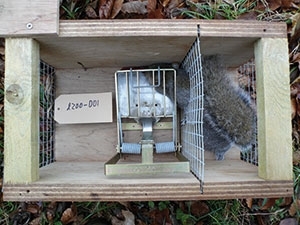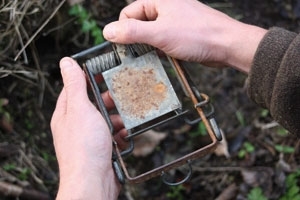 The international debate on trap humaneness began in the 1990s. Canada, as a major exporter of wild-caught fur, had a product to defend and it had, in fact, been working on its own voluntary standards for some years.
The international debate on trap humaneness began in the 1990s. Canada, as a major exporter of wild-caught fur, had a product to defend and it had, in fact, been working on its own voluntary standards for some years.
Since the 1990s, the Fur Institute of Canada has tested 140 kill-traps and certified 18 models, most of them in several sizes, as passing humaneness standards agreed between the EU, Canada, Russia, and the USA. Many of these are new models.
New Zealand, which imported stoats and weasels from the UK in the 1880s with disastrous consequences for its native birds, had adopted UK tunnel traps. Well aware of the humaneness debate, the New Zealand government tested Fenn traps for speed of kill, and found that they compared poorly against state-of-the art traps approved for other species in Canada.
Their solution, a new series of tunnel traps developed by their Department of Conservation (DOC traps), were shown to pass the requirements of the EU agreement. Although there is as yet no compulsion to change in the UK, if we wanted future-proof traps, the DOC series seemed ideal for the UK too.
The greater humaneness of DOC traps was dependent on an integral tunnel design, for which the NZ Department of Conservation gave detailed specifications. This needed further development for UK conditions, because our stoats and weasels are larger than in New Zealand and we have a different list of non-target species. In 2006 we submitted three sizes of DOC traps and tunnels to Defra for approval. This was granted for England in 2007. Approval indicates only that DOC traps in their tunnels are at least as humane as traps already approved.
A generic limitation with Fenn traps and other ‘body-grip’ traps (including rotating-jaw traps such as the Conibear and Magnum) is that they kill by striking and crushing the body of the animal. The most humane death would result from a strike to the head sufficient to fracture the skull, causing instant irreversible loss of consciousness. This rarely happens in body-grip traps, in which the best outcome is that the body is gripped in the chest or neck, with brain death following as a consequence. In other traps, like the Kania and the DOC series, a head-strike is the intended norm.
In 2008 we conducted field trials to compare the DOC 200 with its designated single-entry tunnel against No 4 Springer traps (Fenn copies) in customary run-through tunnels to represent current practice. DOC 200 traps almost always struck squirrels across the head, or head and neck, whereas Springer traps almost never struck the head. However, the DOC trap/tunnel made 30% fewer captures.
 An obvious suspicion was that, because the DOC tunnel was single-ended, it discouraged entry. In fact, we are now working with DOC traps in revised tunnels that seem to match the Springer No 4 at catching squirrels. All the same, we want to clarify why the original tunnel was a deterrent, so that future attempts to improve trap humaneness will not be made at the expense of efficiency.
An obvious suspicion was that, because the DOC tunnel was single-ended, it discouraged entry. In fact, we are now working with DOC traps in revised tunnels that seem to match the Springer No 4 at catching squirrels. All the same, we want to clarify why the original tunnel was a deterrent, so that future attempts to improve trap humaneness will not be made at the expense of efficiency.
Clearly, laboratory trap testing is not the end of the matter. Without field testing to verify effectiveness, well-meaning regulations could potentially have serious consequences for the gamekeeper.